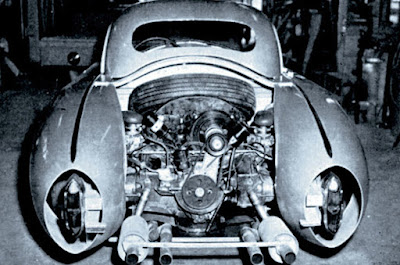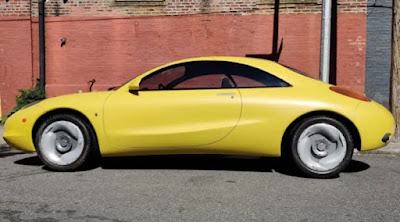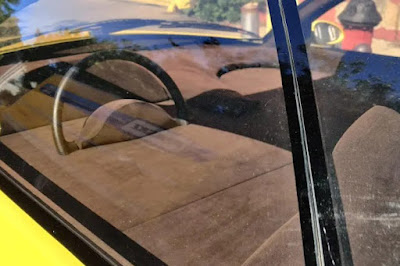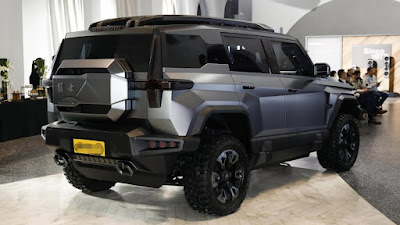Time Capsule - In 2007, a remarkable event unfolded in the automotive world as a Plymouth Belvedere, fondly known as Miss Belvedere, emerged from a time capsule where it had been frozen since 1957. This event captivated the hearts of classic car enthusiasts worldwide, showcasing the enduring appeal of vintage automobiles.
 |
| In 1957, Miss Belvedere deliberately buried by Virgil Exner in Tulsa, Oklahoma. (Pictures from:RailroadJack in Flickr) |
 Back in 1957, Virgil Exner made a deliberate decision to bury Miss Belvedere, intending for it to be unearthed years later as a testament to the automotive aesthetics of that era. Fast forward to 2007, the unveiling of Miss Belvedere in Tulsa, Oklahoma, marked a nostalgic journey into the past, highlighting the automotive ingenuity of the mid-20th century.
Back in 1957, Virgil Exner made a deliberate decision to bury Miss Belvedere, intending for it to be unearthed years later as a testament to the automotive aesthetics of that era. Fast forward to 2007, the unveiling of Miss Belvedere in Tulsa, Oklahoma, marked a nostalgic journey into the past, highlighting the automotive ingenuity of the mid-20th century. |
| In 1957, Miss Belvedere deliberately buried by Virgil Exner in Tulsa, Oklahoma. (Pictures from: FacingMountain) |
 |
| Miss Belvedere shortly after getting out of her grave in 2007. (Pictures from: PinkNantucket) |
The unveiling revealed a car that, despite its weathered appearance, still retained much of its original beauty. The rust, though visually apparent, had not penetrated deep enough to cause irreparable damage, showcasing the durability of vintage automotive design.
 |
| Miss Belvedere shortly after getting out of her grave in 2007. (Pictures from: TheJournalRecord) |
Efforts to bring Miss Belvedere back to life were met with technical challenges, particularly in getting the engine to start due to fuel system issues. However, with the expertise of restoration professionals from Graveyard Cars, the car was successfully transported to a garage for restoration.
 |
| Miss Belvedere in 2009, and as it looks today. (Picture from: Hemmings Daily) |
The resurrection of Miss Belvedere serves as a testament to the enduring legacy of classic cars and the dedication of enthusiasts to preserve automotive history. The phrase "It's Alive!" resonates, akin to the iconic scene from Frankenstein, as Miss Belvedere was revived from its slumber.
 Today, Miss Belvedere resides at Wayne Lensing's Historic Auto Museum in Roscoe, Illinois, where it continues to captivate visitors with its timeless allure and historical significance. Its journey from a buried time capsule to a meticulously restored masterpiece is a testament to the passion and craftsmanship that define the world of classic cars. *** [EKA [31012015] | FROM VARIOUS SOURCES | HISTORICAUTOATTRACTIONS | FACINGMOUNTAIN | HEMMINGS DAILY | PINKNANTUCKET | THEJOURNALRECORD ]
Today, Miss Belvedere resides at Wayne Lensing's Historic Auto Museum in Roscoe, Illinois, where it continues to captivate visitors with its timeless allure and historical significance. Its journey from a buried time capsule to a meticulously restored masterpiece is a testament to the passion and craftsmanship that define the world of classic cars. *** [EKA [31012015] | FROM VARIOUS SOURCES | HISTORICAUTOATTRACTIONS | FACINGMOUNTAIN | HEMMINGS DAILY | PINKNANTUCKET | THEJOURNALRECORD ]Note: This blog can be accessed via your smart phone.





































